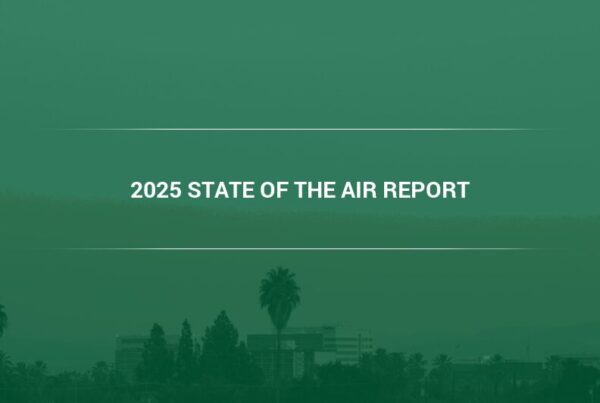Here is How Lung Damage from Air Pollution Happens explained by HVAC air filtration company of Camfil USA air filters.
Air pollution leads to the development of millions of respiratory illnesses and premature deaths every year, due to the damage caused by breathing in various air pollutants. It’s important to understand exactly how lung damage from air pollution occurs, as well as what steps can be taken to protect oneself from lung damage due to air pollution exposure
What Are the Types of Air Pollution that Cause Lung Damage?
There are several types of air pollutants that can cause lung damage. The EPA recognizes four primary air pollutants that are the most ubiquitous and have the most damaging impacts on human health. These air pollutants are nitrogen dioxide, sulfur dioxide, ozone and particulate matter.
Sulfur dioxide is a colorless toxic gas, part of the larger group of chemicals referred to as sulfur oxides. It is primarily released into the air by the burning of fossil fuels at industrial facilities and power plants. Nitrogen dioxide is a highly reactive gas and it comes primarily from emissions released by trucks, cars, and power plants.
“Ozone at ground level is not emitted straight into the air like sulfur dioxide and nitrogen dioxide, but it is created through a chemical process that happens when nitrogen, as well as volatile organic compounds, react to sunlight,” says Kevin Wood, Vice President Sales & Marketing at Camfil USA. “Ozone is beneficial in the high atmosphere where it protects us from ultraviolet radiation, but at ground level, it is a toxic pollutant that has a variety of negative health effects on people’s lungs.” (1)
Particulate matter is one of the most dangerous air pollutants. Particulate matter is the collective term for tiny liquid or solid particles that are found in the air such as dirt, soot, smoke, and bioaerosols. They are subdivided into three categories: PM10 which is around 10 µm across and potentially visible to the human eye, PM2.5 which is smaller than 2.5 µm or smaller than the width of a single human hair, and PM1 which are 1 micron and smaller and are by far the most prevalent size by count in any atmospheric air sample.
What Are the Effects of Air Pollution on Lungs?
The effects of air pollution on lungs vary, depending on the type of pollution, the length of exposure, and the individual person. However, the most consistent and likely effects of air pollution exposure are the cause or exacerbation of asthma, the development of chronic obstructive pulmonary disease and emphysema, and the increased risk of developing lung cancer.
Asthma can be caused by all four criteria air pollutants, and more than 20 million people in the United States including around six million children struggle with asthma. Ozone exposure is thought to be one of the primary contributors to asthma, and it can collect in extremely high concentrations in urban environments during the summer. Relatively low amounts of ozone exposure can cause shortness of breath, throat irritation, coughing and chest pain.
“Chronic obsessive pulmonary disease is a permanent condition that involves the narrowing of the airways caused by continuous exposure to the pollutants that create inflammation. Inflammation is an immunological response intended to protect the body from these air pollutants,” says Wood. “However, the inflammatory response can also damage the lung tissue in a condition referred to as either chronic bronchitis when it happens in the larger airways or as emphysema when it happens in the lung’s smaller passageways.” (2)
Exposure to particulate matter is dangerous because the particles are so small that they can easily penetrate the tissue of the lungs and cause damage. While our natural defenses can protect us from larger particles, the small particles of air pollution can easily bypass those defenses and damage the lungs resulting in heart attacks, asthma, overall decreases in lung function, difficulty breathing, lung cancer, and premature death.
Particulate matter pollution irritates the lungs and causes an immunological response that leads to an increased permeability of lung tissue, which can further aggravate the severity of pre-existing respiratory diseases.
How to Prevent Lung Damage from Air Pollution
The best way to prevent lung damage from air pollution and protect yourself from developing lung diseases is to stay informed about the air quality in your local area. You can view reports about your local air quality and air pollution at Airnow.gov, managed by the EPA.
“If air pollution levels are high, try to limit time spent outdoors. Avoid exercising outdoors if possible, and if you must spend time outdoors, do so at night when air pollution levels are lowest. Avoid high traffic areas, and if air pollution is extremely high, employ industry-grade filtration masks,” states Wood. “At home, make sure your HVAC system is properly installed and maintained, with high-efficiency filters employed.” (3)
What Can You do to Stop Lung Damage from Air Pollution?
You can do your part to reduce air pollution emissions by using less energy in your house, and by walking, carpooling, or using public transportation to reduce emissions from your car. Don’t burn trash, and always use chemical cleaners responsibly.
If you need help determining the right type of HVAS air filters to prevent lung damage from air pollution, contact Camfil today. Camfil will be able to advise you on the different types of filters and tell you which filters are the most effective against the criteria air pollutants.
SOURCES
https://www.epa.gov/criteria-air-pollutants
http://www.psr.org/assets/pdfs/air-pollution-effects-respiratory.pdf



